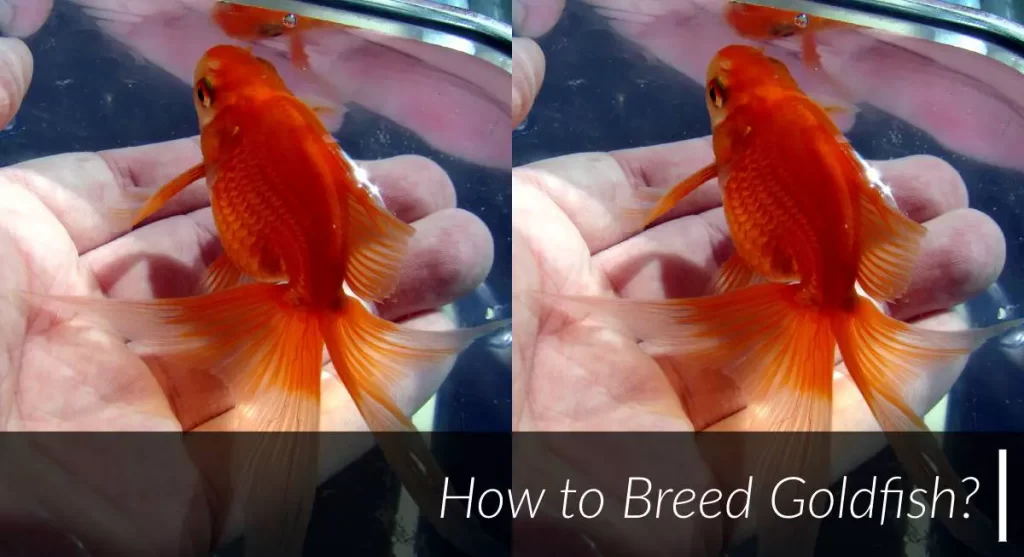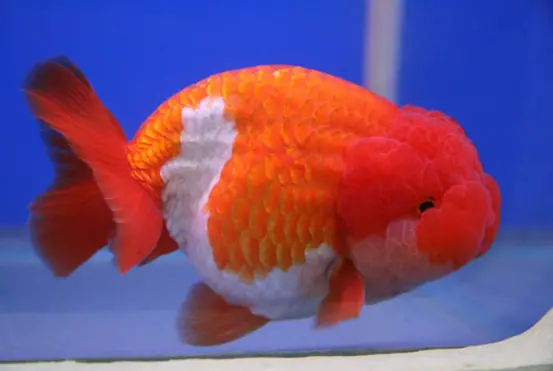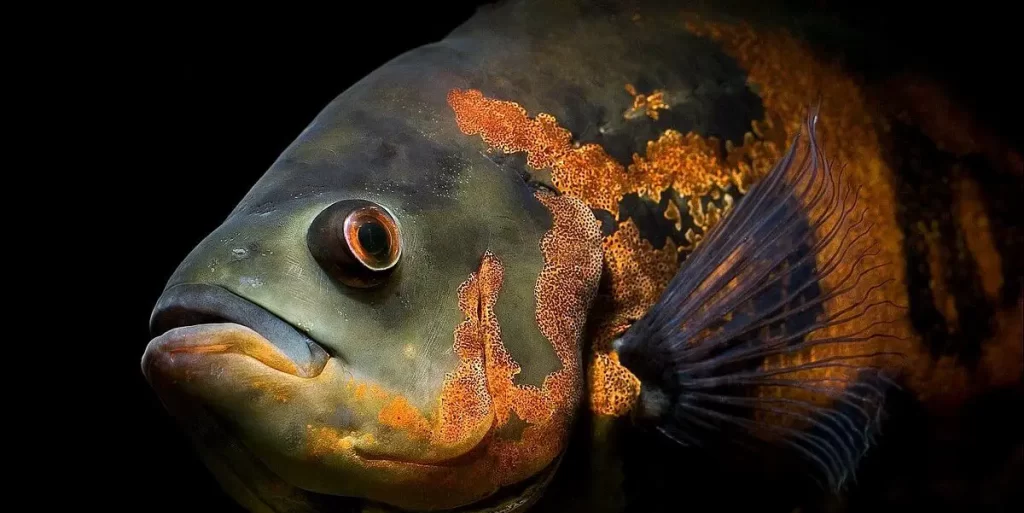Goldfish are one of the most popular fish kept in aquariums and ponds. They are beautiful, come in a variety of colors, and are relatively easy to care for. However, one question that often arises is how to breed goldfish. This step-by-step guide will walk you through all the basics of breeding these lovely fish.
If you’re looking to breed goldfish, it’s important to understand the process and set up the right conditions. In this article, we will cover everything you need to know about breeding goldfish, from setting up the tank to caring for the young. Goldfish can be a challenging fish to breed, but with patience and some basic knowledge, you can successful create new life in your aquarium!
Goldfish Breeding Equipment
To breed goldfish, you will need the following:
A Breeding Tank
This should be a separate tank from your main aquarium. It should be at least 20 gallons in size and equipped with a filter and air stone. The breeding tank can be set up temporarily or permanently.
Spawning Mops or Grass
These provide a place for the female to lay her eggs. You can purchase these items from your local fish store or online.
Aquarium Salt
This is used to help with the development of the fry (baby fish). Aquarium salt can be found at your local fish store or online.
- API AQUARIUM SALT Freshwater Aquarium Salt 16-Ounce Box
- Instant Ocean Reef Crystals Reef Salt For 160 Gallons, Enriched Formulation For aquariums
- Epsoak Epsom Salt 19 lb. Bulk Bag Magnesium Sulfate USP
- Amazon Brand – Solimo Epsom Salt Soak, Magnesium Sulfate USP, 8 Pound
Heater
The breeding tank should be kept at a temperature of 68-74 degrees Fahrenheit. A small aquarium heater can be used to maintain the correct temperature.
hygger Saltwater Tank Titanium Tube Submersible Pinpoint Aquarium Heater with Digital Thermostat, can be a good option for you.
Goldfish Food
You will need to purchase high-quality goldfish food to help support the health of your fish during the breeding process.
| Image | Food For Goldfish | Link |
 |
Josh’s Frogs Melanogaster Fruit Fly Culture Kit (Makes 10 Cultures) | |
 |
Ocean Nutrition Instant Baby Brine Shrimp 0.7-Ounces (20 Grams) JarBrine shrimp | |
 |
1000+ Live Daphnia Magna | |
 |
Exotic Nutrition Bulk Dried Black Soldier Fly Larvae (10 lbs.) – High-Calcium Insect Treat |  |
 |
9 OZ Matured Micro worm Mega Culture – Ready to Harvest – Live Fish Food | |
 |
SAN FRANCISCO BAY Brand Freeze Dried Bloodworms 1.75oz | |
 |
San Francisco Bay Brand/Sally’s Freeze-Dried Bacteria Free Tubifex – 4 oz. | |
 |
Uncle Jim’s Worm Farm 500 Count Red Wiggler Live Composting Worms | |
 |
Hikari Micro Pellets (1.58 (2 Pack)) | |
 |
Tetra PRO PlecoWafers 2.12 Ounces, Nutritionally Balanced Vegetarian Fish Food | |
 |
Tetra TetraFin Goldfish Flakes 4.52 Pound Bucket, Balanced Diet for Goldfish |
Plants
Plants are not necessary in the breeding tank, but they can provide cover for the fry (baby fish) once they are born. If you choose to add plants, be sure to use species that can tolerate high levels of salt such as java fern or hornwort.
To simulate the natural conditions that goldfish would breed in, it is recommended to add a layer of gravel to the bottom of the tank. This can be either real or artificial. The gravel should be deep enough to cover the entire bottom of the tank, with a depth of at least two inches.
Once the gravel is in place, you can add water to the tank. Be sure to use dechlorinated water as goldfish are very sensitive to chemicals. It is also important to add aquarium salt to the water.
Sponge Filter
A sponge filter is a great way to filtrate the water in your breeding tank as it provides both mechanical and biological filtration. To set up a sponge filter, simply place it in the tank and connect it to an air pump.
Tips Before You Begin Breeding Your Goldfish
- Avoid inbreeding by using different pairs of goldfish to breed. This will help ensure that your offspring are healthy and have a good genetic diversity.
- You need to have a lot of patience when breeding goldfish. It can take months or even years to get the results you want.
- Be prepared to care for a lot of fry (baby fish). You may need to set up a separate tank for them.
- Make sure you have the time and resources to care for your goldfish before you start breeding them. This includes having enough tanks, food, and time to clean and maintain all of the tanks.
- Breeding goldfish can be a rewarding experience, but it is also a lot of work. Make sure you are prepared for it before you get started. Thanks for reading! I hope this has been helpful.
Setting the Right Conditions for Breeding
Before you can start breeding goldfish, it’s important to create the right conditions. This means setting up a separate breeding tank and closely monitoring the temperature, food, and water quality.
Planning
The first step is to plan your breeding project. This includes deciding what type of goldfish you want to breed, as well as how many. It’s important to have a good idea of what you want before you start, as breeding goldfish can be a time-consuming and expensive process.
Once you have a plan in place, the next step is to set up the breeding tank. This should be a separate tank from your main aquarium, and it should be large enough to accommodate the number of fish you plan on breeding. The tank should also have a well-sealed lid to prevent escapees.
Setting Up The Breeding Tank
The next step is to set up the breeding tank. This should be a separate tank from your main aquarium, and it should be large enough to accommodate the number of fish you plan on breeding. The tank should also have a well-sealed lid to prevent escapees.
When setting up the breeding tank, it’s important to use filtered and treated water. The water should be at room temperature or slightly warmer, as goldfish prefer warm water for spawning. You can also add a small amount of aquarium salt to the water, which will help to reduce stress and promote spawning.
It’s also important to create hiding places in the tank for the fish. This can be done with live plants, rocks, or other decorations. Goldfish like to have places to hide, and this will also help to keep them calm during the breeding process.
Closely Monitor on The Food
Once the breeding tank is set up, you need to closely monitor the food situation. Goldfish are omnivorous, which means they need both plant and animal matter in their diet. A good quality goldfish food should provide the necessary nutrients for breeding.
You will also need to increase the amount of food you feed your fish during the breeding season. This is because goldfish need extra energy to produce eggs and care for fry. It’s important not to overfeed, as this can cause problems with water quality.
Simulation Of Temperature For Breeding
The goldfish has to understand the natural temperature increases as a sign of breeding. Thus, you can decrease the temperature of the tank and gradually increase the temperature. This is create an urgency in the goldfish to breed.
For this, you can lower the temperature of the tank by 10 to 12 degrees celsius or 50 to 54 degree fahrenheit. Then, you can induce the breeding by raising temperature from 20 to 23 degree celsius which is 68 to 74 degree fahrenheit. Make sure that you do not raise the temperature more than 2 to 3 fahrenheit each day.
Water Change
Changing water is also equally important for the goldfish to remain healthy. Water change will help it understand the water cycle. You should change water by 20 to 30 percent each week. This will help to remove the toxins from the water and make it more habitable for the goldfish.
Sexing Goldfish And Isolating Them
Now that you have the breeding tank set up and the fish are acclimated, it’s time to sex them. This can be a difficult task, as goldfish do not have external sex organs. The best way to determine the sex of your fish is to look for physical characteristics.
Female Goldfish
Female goldfish tend to be larger than males and have a rounder body shape. They also tend to have smaller fins, and their vent (the area between their anus and tail) is usually larger and more pronounced.
Examine the shape of their vent. The vent is a small opening between the anus and the anal fin through which fish expel egg or sperm depending on their sex. [5] Female vents, like an outie, are rounded and convex.
Examine your goldfish abdomen. Females have a very soft and movable abdomen between the pelvic and anal fins.
Take a look at the pectoral fins. Female pectoral fins are round and short.
Female goldfish are generally smaller and rounder than male goldfish, which are longer and pointier. This, however, is a less reliable method of distinguishing the two.
Male Goldfish
Male goldfish are typically smaller than females and have a slimmer body shape. They also tend to have larger fins, and their vents are usually smaller and less pronounced.
Tubercles, or little white stars, are present. Tubercles are little pimples that form on males’ fins, heads, and even gills while they’re getting ready to reproduce.
A vent that is concave, or innie. Males have an inward-slicing vent rather than an outward-slicing vent.
Feel the area around the stomach. Male abdomens are substantially more stiff and firm than female abdomens.
Look at the pectoral fins on the pectoral fins. Male pectoral fins are pointier and longer than female pectoral fins, which are small and spherical.
Behavior
Another way to sex goldfish is to observe their behavior. Male goldfish are often more aggressive than females, and they will chase other fish around the tank. Females are typically more docile and will stay close to the bottom of the tank.
Isolate The Couple
Once you have determined the sex of your fish, it’s time to isolate them. This is important because you don’t want your fish to breed with just any other fish. You want to make sure that they are compatible and that they will produce healthy offspring.
The best way to do this is to put each fish in its own tank. This will allow you to closely monitor their health and behavior and make sure that they are ready to breed.
Breeding Goldfish
Now that your fish are isolated, it’s time to start breeding them. The first thing you need to do is choose the best breeders. This means choosing fish that are healthy and have good genes. You also want to choose fish that are of a similar size so that they can produce healthy offspring.
Choose Best Breeders
Once you have chosen the best breeders, it’s time to add them to the breeding tank. You can either let them spawn naturally or artificially inseminate them. If you let them spawn naturally, you will need to closely monitor the process and remove the fry (baby fish) from the tank when they are born. If you artificially inseminate them, you will need to do this carefully so that you don’t damage the eggs.
Add Goldfish To The Tank For Natural Spawning
Once you have added the goldfish to the breeding tank, it’s time to let them spawn. This process can take a few days or a few weeks, so be patient. You will know that spawning is happening when you see the eggs in the tank.
Use Artificial Insemination If Natural Is Not Working
If your fish are not spawning naturally, you can try artificial insemination. This is a more complicated process, but it can be successful if done carefully.
Keep The Breeders In Separate Tank After Spawning
After your fish have spawned, you will need to keep them in separate tanks. This is because they can become aggressive and fight with each other if they are kept together.
See The Eggs Turn Into Goldfish
Once the fry are born, you will need to keep them in a separate tank. This is because they are very delicate and need to be kept away from the adults. You will also need to closely monitor their health and make sure that they are getting enough food.
As your fry grow, you can slowly add them back into the main tank. You should also continue to monitor their health and make sure that they are adjusting well to their new environment.
Congratulations! You have successfully bred goldfish! Now it’s time to sit back and enjoy your new little fishes. Thanks for reading! I hope this has been helpful.
Goldfish Breeding Fails
There are a number of reasons why breeding goldfish can fail.
Health Reasons
The most common reason is that the fish are not healthy enough to spawn. This can be due to a number of factors, including poor diet, stress, and disease.
Non-Compatibility
Another common reason for failure is that the fish are not compatible. This means that they are not able to produce healthy offspring. This can be due to a number of factors, including differences in size, color, and temperament.
Bad Environment
Finally, breeding goldfish can fail if the environment is not suitable. This includes things like water quality, temperature, and pH level. If any of these things are not right, it can cause problems with spawning and raising fry.
Infertile and Fertile Goldfish Eggs
When goldfish eggs are first laid, they are covered in a sticky substance called mucous. This mucous protects the eggs and keeps them from drying out. After a few days, the mucous will start to disappear and you will be able to see the eyes of the fry inside the egg.
At this point, the eggs are considered to be fertilized. However, this does not mean that they will all hatch. Some of the eggs may be infertile and will not develop into fry.
The best way to tell if an egg is fertile is to look for a small black spot on the egg. This black spot is called the blastodisc and it contains the goldfish’s DNA. If you see this black spot, it means that the egg is fertile and will develop into a fry.
If you do not see a black spot, the egg is probably infertile and will not hatch. However, there is a small chance that the egg could still hatch if it is kept in ideal conditions.
FAQ
Will Goldfish Breed in a Tank?
Yes, goldfish will breed in a tank if the conditions are right. Goldfish breeding tank should be at least 20 gallons and should have a sponge filter.
How Do I Know if My Goldfish are Mating?
You can tell if your goldfish are mating if you see them chasing each other around the tank. Male goldfish will also often build nests out of plants or gravel.
You can tell if your goldfish are mating if you see them chasing each other around the tank. You may also see them rubbing against each other.
How Often do Goldfish Breed?
Goldfish typically breed once a year, but they can sometimes breed more frequently if the conditions are right.
What is Breeding Season for Goldfish?
The breeding season for goldfish typically lasts from spring to summer. However, goldfish can sometimes breed outside of this time frame if the conditions are right.
Conclusion
I hope this article has been helpful in teaching you how to breed goldfish. Goldfish are a great addition to any home, and breeding them can be a fun and rewarding experience. Thanks for reading!
Do you have any questions or comments? Please feel free to leave them below. I would love to hear from you!
Happy fish keeping! :)”






